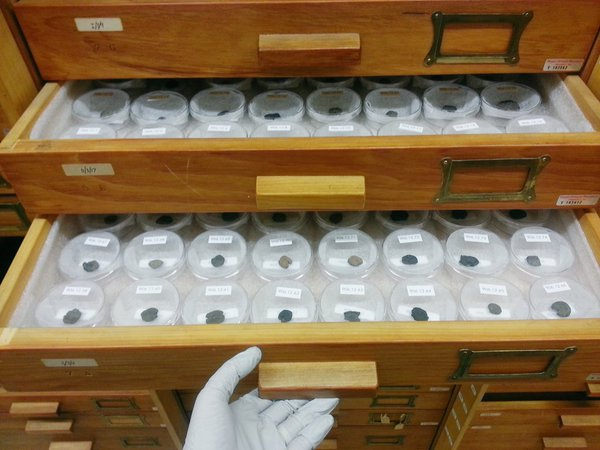Clay sealings from Edfu, Egypt in the Greek & Roman collection

Collected in 1906 by the Royal Ontario Museum's founder, Charles T. Currelly, these Ptolemaic period clay seal impressions were originally used like sealing wax to secure rolls of papyrus documents.
#Ptolemaic seal impressions from #Egypt finally get their turn to be re-housed. Follow their progress! @ROMtoronto pic.twitter.com/aEqaw7xokZ
— Kay Sunahara (@KaySunahara) February 9, 2016
The sealings, tiny friable bits of unfired clay, are very fragile and preserve a delicate impression of a carved seal stone. They depict scenes from Graeco-Egyptian mythology, individual female and male portraits, and group portraits. On average, each sealing is about 2 cm wide, some even less. Small diameter petri dishes were special ordered for the Edfu sealings.
Each dish & lid is numbered & carefully lined with cushioning cup of ethafoam #Ptolemaic seal ready! #Edfu #Egypt pic.twitter.com/vAuvT14lNU
— Kay Sunahara (@KaySunahara) February 9, 2016
Not all of the sealings have been labelled with their museum accession number. Rather than squeezing a 8-digit number on the back of the sealing, the new housing will identify its contents as well as safely store each individual sealing.
Now to transfer the #Edfu #Ptolemaic seals into their upgraded housing!#museumwork #collections #Egypt pic.twitter.com/xW6Lq7f4sK
— Kay Sunahara (@KaySunahara) February 9, 2016
Moving the sealings from a mass storage tray to individual dishes affords us more flexibility combined with greater artifact protection when handling the collection.
2 drawers of #Ptolemaic seals done! With 5 drawers go = several more days work #Edfu seals #museumwork #artifacts pic.twitter.com/onGm5ADZJV
— Kay Sunahara (@KaySunahara) February 9, 2016
Inventory updates are recorded on the database, and artifact condition is also noted, before the sealings are tucked safely back into their bank of cabinets. They await their turn for high-resolution photography.
The ROM Edfu sealings were photographed for a collaborative project with international researchers studying Ptolemaic Egyptian iconography and socio-politics.
UPDATE 2018: See all the photographs in our online collections here: Edfu Clay Sealings
